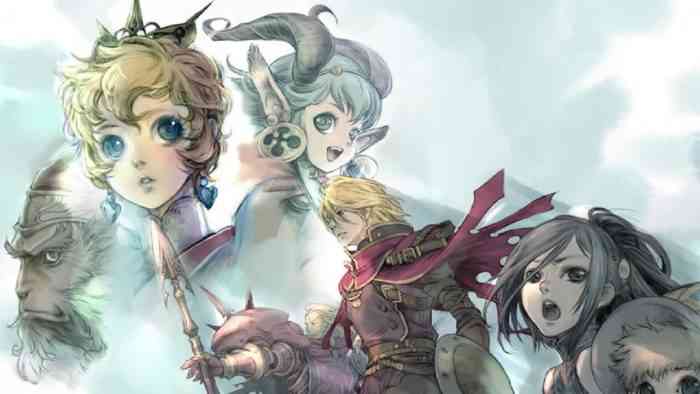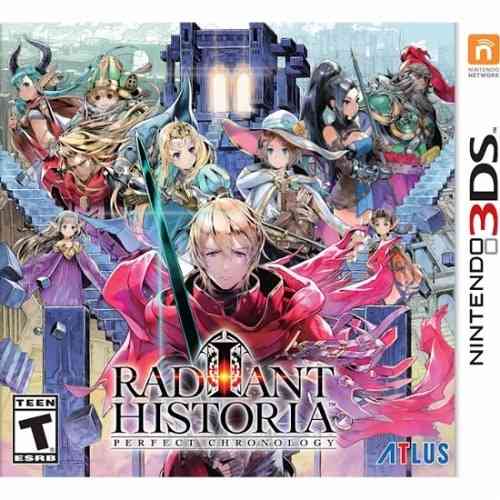Radiant Historia: Perfect Chronology Review
Every RPG fan knows there was a heyday for the genre, a time when masterpiece after masterpiece hit our shores, an era of unmatched brilliance in role-playing design. Of course, no RPG fan can agree on when that heyday was. Was it the Super NES period, which brought us Chrono Trigger? Or was it the PlayStation 2, with Final Fantasy X? Or maybe the original PlayStation, with its games that defined the genre for years to come, like Final Fantasy VII. For me, the sweet spot lies somewhere between 16- and 32-bit. There was magic in those lo-fi graphics and those moving, MIDI melodies. I say all this in order to emphasize the following: Radiant Historia: Perfect Chronology feels like the perfect encapsulation of 16- and 32-bit RPG history, but one that has learned all the lessons of those games. For RPG fans from any era, this is very worth your time.
Perfect Chronology is a remake of 2010’s Radiant Historia, and the main story plays out mostly the same. It follows Stocke, an agent for the Special Intelligence branch of the Alistel military. Stocke is sent on a mission to rescue a spy, and his superior gives him a book called the White Chronicle, which quickly becomes the centerpiece of the game. The White Chronicle allows Stocke to travel through time, letting him return to events where he made mistakes and correct them. When everything goes wrong, and Stocke’s friends end up dead, he finds himself traveling back in time to the beginning of the mission. Armed with his knowledge of what the future holds, he is able to save everyone. But there’s so much at stake; besides the ongoing war, the world is slowly but surely turning into a desert wasteland. Using the White Chronicle, Stocke must end the war and set everything right.
A critical choice made near the beginning of the game effectively splits the timeline in two, and you’ll travel down both timelines as the game progresses. Events in one timeline have an effect on the other, so world-hopping is necessary to progress. This sort of storytelling is reminiscent of Chrono Trigger and its sequel, Chrono Cross. Trigger involved basic time traveling, with changes in the past impacting the future, whereas Cross explored the notion of parallel worlds. Marrying these two concepts into a single game, Radiant Historia ups the ante significantly. Truly, the developers took inspiration from the finest, and somehow didn’t just deliver a carbon copy of the originals, but something that transcends them in many ways.
________________________
“It’s rare for me to find an RPG with battles I consistently find compelling; Radiant Historia is one of the few.”
One of the ways in which Radiant Historia transcends its inspirations is in its battle system. Classic RPGs tended toward some variation of turn-based combat, where characters simply wait their turn, then perform their actions. Radiant Historia is turn-based, but that’s pretty much the extent of the similarities. Battles are fought against enemies organized on a 3×3 grid. Using special moves, characters are able to move enemies around on that grid, even lumping multiple enemies together in one square. Attacks are aimed at squares, and so every enemy within a square is damaged. Your strategy should be to maneuver as many enemies to a single location as possible, so you can deliver the most damage all at once. You also have the ability to freely change places with any character — ally or enemy — on the battle timeline, so you can group your attacks together more precisely. Linking multiple attacks together increases your combo level, which impacts how much experience and gold you receive at the end of the fight. It’s rare for me to find an RPG with battles I consistently find compelling; Radiant Historia is one of the few.
A significant change from the 2010 original is the addition of a “Friendly” combat mode, which greatly eases the difficulty and, in fact, allows you to automatically win battles by striking enemies on the field. This gains you all the experience and spoils you would have gotten had you fought the battle fully. For players interested solely in the game’s story, Friendly seems like a solid option. Likewise, for the hardcore, there’s a new Hard mode, as well, which does what you might expect to the difficulty of battles.

Besides the tweaks to the battle system, the 3DS remake brings a couple of new, meaty bonuses to the table. The first, the Vault of Time, is the quintessential bonus dungeon, with increasingly dangerous monsters promising increasingly valuable rewards. The other is much more interesting. The Dunamis is a ship that travels through time and space. Piloted by the enigmatic Nemesia, you use it to travel to several different alternate realities, separate from the main quest’s two, in your search for Artifacts. Nemesia believes these Artifacts can stop the ruination of the world. New quests are added periodically as you progress through the game, and while you don’t have to play through them, I found them to be a lot of fun. They present several cool “what-if” scenarios worth exploring.
__________________________
“Truly, the developers took inspiration from the finest, and somehow didn’t just deliver a carbon copy of the originals, but something that transcends them in many ways.”
The game is fully voiced (for the important characters, at least), and the quality is quite good. The tone of the script leans a little on the formal side, but with just enough character to keep it from sounding stuffy. The music is similarly great, composed by Yoko Shimomura, of Final Fantasy XV and Kingdom Hearts fame.
Now, all this praise should not suggest this is a perfect game. I do have a few quibbles. For one, the graphics weren’t anything state-of-the-art when the game released on the original DS in 2010. The remake ups the resolution, but character sprites, spell effects, and animations are decidedly subpar. And while the music is excellent, there’s too little of it. You’ll hear the same tracks over and over, to the point where reaching a new area is exciting because you’ll finally get to hear a new song. I also found certain optional side quests a bit cumbersome to carry out — lots of traveling back and forth through time, leaping between realities. You can’t leap to any point in time, only specific nodes, so returning to complete certain quests requires you to play through content you’ve already seen (though you can skip events you’ve completed with the press of a button).
Still, I’m more than happy to overlook the few things Radiant Historia: Perfect Chronology gets wrong because of how much it gets right. It feels like the second coming of the 16- and 32-bit RPG, and I couldn’t be happier to jump back in.
*** Nintendo 3DS product provided by the publisher ***
The Good
- Exceptional story
- Interesting and complex characters
- Excellent localization and voice acting
- Incredible, creative battle system
- Huge number of interesting side quests
The Bad
- Graphics are nothing special
- Some side quests are cumbersome


